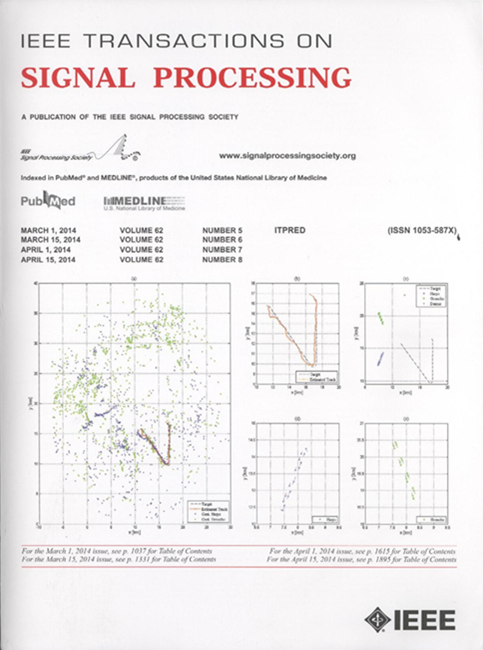Optimal Beamforming Structure and Efficient Optimization Algorithms for Generalized Multi-Group Multicast Beamforming Optimization
IF 5.8
2区 工程技术
Q1 ENGINEERING, ELECTRICAL & ELECTRONIC
引用次数: 0
Abstract
In this work, we focus on solving non-smooth non-convex maximization problems in multi-group multicast transmission. By leveraging Karush-Kuhn-Tucker (KKT) optimality conditions, we thoroughly analyze the optimal beamforming structure for a set of optimization problems characterized by a general utility-based objective function. By exploiting the identified optimal structure, we further unveil inherent low-dimensional beamforming structures within the problems, which are asymptotically optimal in various regimes of transmit signal-to-noise ratios (SNRs) or the number of transmit antennas. Building upon the discovered optimal and low-dimensional beamforming structures, we then propose highly efficient optimization algorithms to solve a specific multi-group multicast optimization problem based on the weighted power mean (WPM) utility function. The proposed algorithms first use the successive convex approximation (SCA) framework to decompose the problem into a sequence of convex subproblems, each with an optimal closed-form beamforming solution structure. Then, we propose a hyperplane fixed point iteration (HFPI) algorithm to compute the optimal Lagrangian dual variables for each subproblem. Numerical results show that the proposed algorithms maintain comparable or improved utility performance compared to baseline algorithms, while dramatically reducing the computational complexity. Notably, the proposed ultra-low-complexity algorithms based on low-dimensional beamforming structures achieve near optimal utility performance with extremely low computational complexity. This complexity remains independent of the number of transmit antennas, making them promising and practical for extremely large multiple-input multiple-output (XL-MIMO) applications in 6G.广义多组多播波束形成优化的最优波束形成结构和高效优化算法
本文主要研究多组组播传输中的非光滑非凸最大化问题。利用Karush-Kuhn-Tucker (KKT)最优性条件,我们深入分析了一组优化问题的最优波束形成结构,这些优化问题的特征是基于一般效用的目标函数。通过利用确定的最优结构,我们进一步揭示了问题中固有的低维波束形成结构,这些结构在各种发射信噪比(SNRs)或发射天线数量下都是渐近最优的。基于所发现的最优和低维波束形成结构,我们提出了基于加权功率均值(WPM)效用函数的高效优化算法来解决特定的多组多播优化问题。该算法首先使用连续凸逼近(SCA)框架将问题分解为一系列凸子问题,每个凸子问题都具有最优闭形波束形成解结构。然后,我们提出了一种超平面不动点迭代(HFPI)算法来计算每个子问题的最优拉格朗日对偶变量。数值结果表明,与基准算法相比,所提算法保持相当或更高的效用性能,同时显著降低了计算复杂度。值得注意的是,本文提出的基于低维波束形成结构的超低复杂度算法以极低的计算复杂度实现了接近最优的实用性能。这种复杂性与发射天线的数量无关,这使得它们在6G的超大型多输入多输出(xml - mimo)应用中具有前景和实用性。
本文章由计算机程序翻译,如有差异,请以英文原文为准。
求助全文
约1分钟内获得全文
求助全文
来源期刊

IEEE Transactions on Signal Processing
工程技术-工程:电子与电气
CiteScore
11.20
自引率
9.30%
发文量
310
审稿时长
3.0 months
期刊介绍:
The IEEE Transactions on Signal Processing covers novel theory, algorithms, performance analyses and applications of techniques for the processing, understanding, learning, retrieval, mining, and extraction of information from signals. The term “signal” includes, among others, audio, video, speech, image, communication, geophysical, sonar, radar, medical and musical signals. Examples of topics of interest include, but are not limited to, information processing and the theory and application of filtering, coding, transmitting, estimating, detecting, analyzing, recognizing, synthesizing, recording, and reproducing signals.
 求助内容:
求助内容: 应助结果提醒方式:
应助结果提醒方式:


